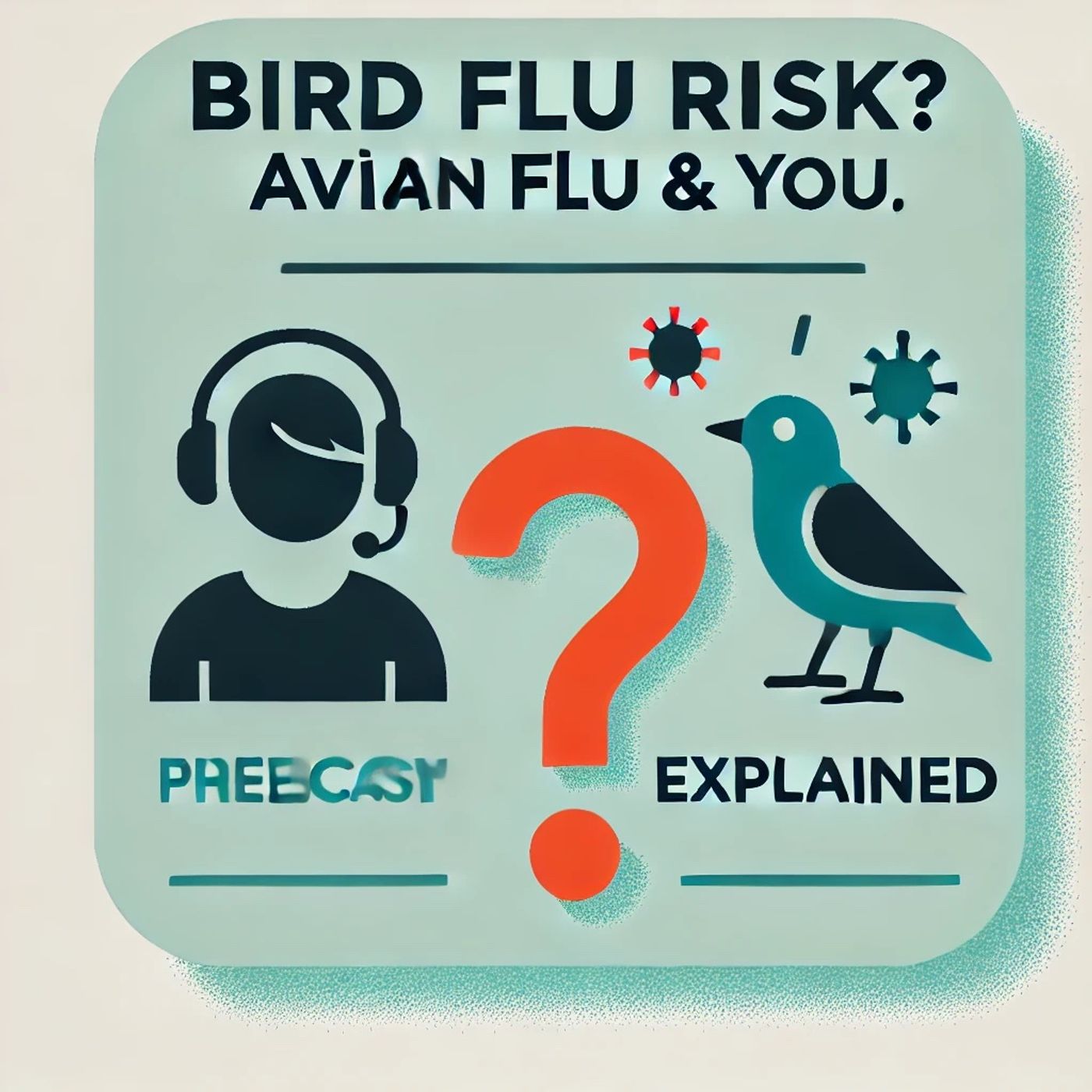Podcast Episode Details
Back to Podcast Episodes
Bird Flu in 2025: Your Personal Risk Guide - Who Needs to Worry and When to Take Precautions
Welcome to Bird Flu Risk? Avian Flu & You, Explained. I’m your host, guiding you through your personal risk of avian influenza as of August 2025.
First, let’s talk about the big picture. According to a joint assessment from the World Health Organization and its partners, the overall public risk from bird flu remains low. Current US outbreak reporting shows declining cases in both animals and people. Still, a few infections in humans tied to animal exposure have occurred, mostly involving farm or animal industry workers. Most importantly, there’s still no ongoing human-to-human transmission, and the impact on the general public is considered minor.
Now, let’s focus on you. What’s your individual risk? To answer that, we’ll personalize by occupation, location, age, and health.
Do you work with poultry, dairy cows, or other livestock? Poultry and dairy workers have the highest risk due to regular contact with potentially infected animals or contaminated materials. If you handle raw milk, sick animals, assist in culling flocks, or do veterinary work, you’re also considered higher risk. Backyard bird owners and hunters of wild birds are at moderate risk, while most other professions are at very low risk.
Location matters. Rural residents near farms or those in outbreak zones—where recent detections of H5N1 in animals have occurred—face slightly increased risk. For city dwellers, especially those not involved with animal agriculture, risk is minimal.
Age is a factor as well. Data from the CDC and historical analyses describes higher risk of severe illness in adults over 50, especially for those with weakened immune systems. Infants and young children have generally fared better, but most human cases are linked to adults with occupational exposure. Underlying health conditions like chronic respiratory issues or heart disease may also worsen outcomes if infected.
Let’s walk through a risk calculator narrative:
If you’re a poultry worker in an affected county over age 50 with asthma, your risk is moderate, and you should be especially careful. If you’re a 25-year-old city-dweller who doesn’t handle birds or raw animal products, your risk is currently very low. If you raise chickens in your backyard and live near recent outbreaks, your risk is a little higher—using gloves and a mask during chores lowers it. For an 80-year-old with heart disease living next to a commercial farm, caution and close attention to local health updates are wise.
For high-risk individuals—agricultural workers, people with close animal contact, and those with certain medical conditions—the CDC urges using gloves, goggles, N95 masks, and frequent handwashing. Avoiding contact with sick or dead birds and consuming only pasteurized milk and thoroughly cooked eggs and poultry is essential.
If you’re lower risk, reassurance: day-to-day activities like shopping or dining out carry virtually no risk. You don’t need special precautions beyond routine hand hygiene and food safety.
For everyone, a simple decision framework: If you have direct contact with at-risk animals or work environments, take personal protective steps, watch for fever, cough, or conjunctivitis, and seek prompt care if you feel sick. If you have no animal exposure and no symptoms, you don’t need to worry—just stay informed.
Thanks for tuning in to Bird Flu Risk? Avian Flu & You, Explained. Come back next week for more, and remember, this has been a Quiet Please production. For me, check out QuietPlease Dot A I.
For more http://www.quietplease.ai
Get the best deals https://amzn.to/3ODvOta
Published on 1 day, 17 hours ago